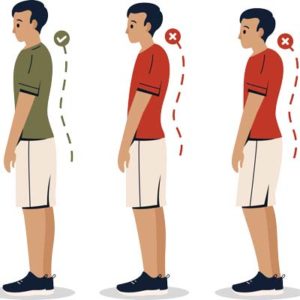Blogs
How to Care for Your Spine Health with Scoliosis

“What is the greatest strategy to improve my spine health if I have scoliosis?” is a common question at the Scoliosis Center of Utah.
While the answer is primarily determined by an individual’s requirements and lifestyle, there are certain things that you can do to promote your spine health, overall comfort in your body, mobility, and any back
From your scoliosis specialists in Midvale, Utah, here are the most powerful steps you can do right now to begin supporting your spine health and preparing your body for scoliosis treatment.
Stretch every day.
Stretching is one of the most underutilized methods for reducing back pain and increasing overall mobility.
Stretching, which is usually considered to be a beneficial exercise, is frequently done incorrectly.
When performing stretches, avoid bouncing into them since this may prevent the muscles actually relaxing and accepting the stretch.
Hold the stretch for at least 30 seconds when you reach your deepest stretch point.
You can increase the duration of a sustained stretch as you get better at it.
Holding a long stretch helps to enhance flexibility, build muscular strength and resilience, and improve balance.
Knee-to-chest, bridges, cat and cow, and seated low back rotations are all effective for relieving lower back pain and improving circulation with scoliosis.
Build strength in your back-supporting muscles.
There are numerous distinct types of workouts, each with its own set of advantages and goals.
While cardiovascular exercises help to boost endurance, improve heart health, and reduce fat in the body, strength-building exercises are best for increasing muscle tone in various regions of the body.
If you have back pain as a result of scoliosis, there’s a good chance the muscles in the region will benefit from strengthening.
Back discomfort is frequently caused by weakened muscles that are tasked with supporting too much weight or strain, which often occurs when the muscles are over-compensating to balance the body as a result of abnormal spinal curvature.
Practice deadlifts, pull-ups, rows, pulldowns, and push-ups to develop muscles in your back, shoulders, and neck that will help you maintain your posture.
Support your sleeping posture.
Have you ever stopped to consider how you spend so many hours in bed each day?
Many people (particularly side-sleepers) sleep with their head and neck overly extended in a forward placement.
This can not only misalign the neck but also cause discomfort and pain throughout the day over days, months, and years.
Sleeping on a lumpy or unsupportive surface, for example, might produce discomfort in the back, particularly if your hips, spine, and shoulders are misaligned.
Pause your routine to make time for physical movement.
It’s vital to take deliberate breaks for activity, whether your main employment is active or sedentary.
Even the most movement-focused professions don’t always meet all of your body’s moving requirements, and with sedentary jobs, the chances are even higher that you’ll need a break for movement, stretching, walking, and warming your muscles.
Movement breaks may be modest, with just 1 to 2 minutes of focused movement every 30 to 60 minutes being enough to completely revitalize your posture, circulation, and attention.
Make sure you’re achieving full 360-degree rotation when taking a break for movement.
Rotate your arms, and torso, and focus on both forward and backward motions while doing so.
Create an ergonomic workspace.
Ergonomics is the art of maximizing performance through systems that support a person’s health.
A worker may be physically comfortable while working in an effective workspace, whether they are sitting, standing, or moving about.
Make sure that your job allows you to stand, walk, lift things, or move about frequently enough so that your back is adequately supported and that you have a chance to rest.
Make sure you’re given with the proper equipment and protection to do your task (including clothing, accessories, and shoes).
If you spend most of your day sitting, make sure you have the opportunity to take breaks for movement, move your seat (and ideally, the height of your desk), maintain a healthy work-station height and distance from your computer screen (if possible).
Make sure your couch is supportive.
Many individuals spend several hours each week on their couches.
The amount of time spent on the sofa accumulates, and without adequate back support, it can cause back discomfort and muscular weakness.
Sit on your couch and evaluate the alignment of your neck and spine to ensure that it is adequately supporting you.
If your head is pushed forward or if your back is hunched and shoulders slumped, it’s probable that your sofa isn’t providing adequate support.
To guarantee that you can sit upright and comfortably on the couch with your feet flat on the floor, place a pillow behind your low back.
If you pick another position instead of sitting straight, make sure it aligns your neck with your spine and shoulders appropriately.
If you commute, ensure your seat is supportive.
Many people spend hours each week in traffic.
If you fall into this group, make sure your driver’s (or passenger’s) seat supports your natural posture.
Sitting in an ideal, upright posture means that your head is squarely above your shoulders, your shoulders are in line with your back, and your back is straight.
If you slouch in the driver’s seat or your back starts to hurt, find the place where you need support and put a pillow or a cushion there during your next commute.
Ask about an orthotic Denneroll device.
Your scoliosis spinal expert may advise you to use an Orthotic Denneroll device to get the most out of your scoliosis treatment.
A Denneroll device is a device that is used to adjust the spine and improve posture.
These devices are home-based tools that are meant to be used for a specific length of time each day, with the goal of enhancing your in-office treatments while also speeding up your results.
Denneroll devices are simple to operate and can assist you to achieve measurable, apparent improvements in posture and pain reduction.
If you live in Midvale, UT, and suffer from scoliosis, ask your scoliosis consultant about Denneroll equipment today.
Wear comfortable shoes.
Contrary to popular belief, there is no “one-size-fits-all” when it comes to shoes for scoliosis.
In reality, the majority of shoe and foot products that claim to help correct spinal misalignment and back pain don’t actually realign the spinal curvature at its source, where the discomfort and misalignment start.
However, shoes can still make a difference in how you carry your body and the weight you put on it, so it’s vital that you know what shoe kinds work best for your body and postural requirements.
Experiment with both “high” and “low” support soles, as well as various shoes for various activities.
Just as you wouldn’t wear the same shoes while out on a hike that you would when working, each shoe is designed for a particular goal and purpose.
If you have scoliosis and are experiencing back pain, avoid wearing shoes that are only made to appear good, and seek for high-quality shoes that are meant to be worn and walked in.
Seek scoliosis treatment.
Seek scoliosis treatment if you’re suffering from back pain or just want to improve your spine health.
Scoliosis treatment may aid in the significant improvement of spine health by increasing circulation, detoxifying joints, releasing strain from adjacent muscles, and realigning bones.
Scoliosis is caused by misalignment in the spine (also known as “subluxations” in the joints).
When a joint becomes misaligned, it can cause discomfort and immobility by interfering with the function of surrounding nerves and muscles.
If you’re searching for scoliosis treatment in Midvale, UT, or have recently inquired about non-surgical scoliosis therapy, you’re in the right place—The Scoliosis Center of Utah in Midvale, UT is ready to assist you to get the relief you desire.
The Scoliosis Center of Utah is a leading expert in the non-invasive spinal treatment and scoliosis therapy.
With a customized treatment program created specifically for you, The Scoliosis Center of Utah can assist you in restoring your mobility and correcting spine posture.
The Chiropractic BioPhysics® treatment method used by the specialists at The Scoliosis Center of Utah can aid in scoliosis and misalignment resolution at the source, resulting in the long-term reshaping of bones and structure of the spine.
Make an appointment now if you’re ready to try out the most cutting-edge scoliosis treatment available.
Do You Qualify for Care?
Schedule an Appointment Below
